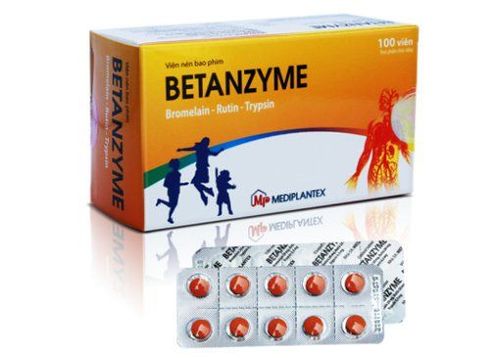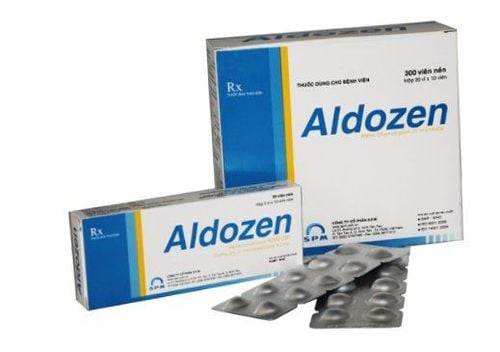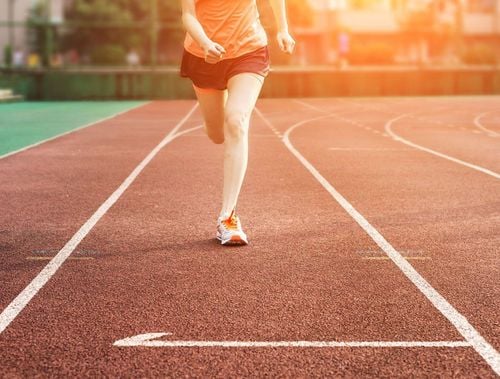This is an automatically translated article.
Young female athletes are the most susceptible to sports injuries. This can be due to many different reasons, including the way you exercise and your daily diet. When an injury occurs, you should quickly find a way to fix it and seek the help of a doctor to avoid more serious injuries.1. Importance of Sports Injury Prevention
Currently, the number of women participating in sports is increasing, along with the number of injuries has also increased significantly. Without a healthy diet and regular exercise regimen, even with ideal training regimens, young female athletes can still end up with injuries similar to in older athletes. When an injury occurs, it is important to know how to intervene quickly to ensure your recovery.Some studies show that injury prevention programs (IPP) are really effective in preventing sports injuries in young female athletes. In general, these programs vary widely, and depending on the sport and age of the participant, IPP focus primarily on developing and strengthening the body's vital organs, improving mobility movement, sports technique, balance as well as avoid common mistakes when you practice. Ideally, young female athletes should talk to their coaches thoroughly about the IPPs that are right for you.
In addition, good nutrition also plays an extremely important role in the prevention of sports injuries. In addition to a healthy and balanced diet, young female athletes should take vitamin and mineral supplements to maintain their peak state. Some of the following nutritional supplements have been shown to improve your athletic performance, including:
Calcium: Some young female athletes struggle to maintain their ideal weight or "thin" ” by avoiding high-calorie dairy products. However, this can lead to calcium deficiency. Experts recommend that athletes under the age of 18 get about 1,300 milligrams (mg) of calcium per day, while those over 18 should get about 1,000 mg of calcium per day. Food sources of calcium, include dairy products, almonds, kale, broccoli, sardines, canned salmon, and other soy products like tofu. Iron: When it comes to menstruating, younger women may be at higher risk of iron deficiency than usual. This has a big impact on your endurance and athletic performance. In particular, this risk is even higher in vegetarians, as red meat is the leading source of iron. Additionally, certain nuts, beans, seafood, and green vegetables like kale or spinach are all other sources of iron. Young female athletes should be screened regularly, through a simple blood test to detect iron deficiency.

Dinh dưỡng tốt đóng vai trò quan trọng trong việc phòng tránh chấn thương thể thao
2. The phenomenon of "triad" increases the risk of sports injuries
Young female athletes are at high risk of developing a spectrum disorder known as the “triad”, the English name is Female athlete triad. The triad includes low body energy availability, low bone mineral density, and menstrual dysfunction. Girls with only one of the components of the triad have a higher risk of muscle and bone injury; This risk increases even more when two or all three components of the triad are present. Here are some signs and symptoms to help you recognize the triad, including:Eating disorders, such as bulimia or anorexia Irregular periods Have obsessive or perfectionist behavior
3. Some common sports injuries in young female athletes
Even when an athlete executes the movement correctly, injury can still occur. In most cases of injury, calmness and proper treatment will help speed your recovery.Here are the 5 most common sports injuries among young female athletes, including:
3.1.Ankle sprains Adolescent female athletes are most susceptible to foot and eye injuries. ankle. In fact, these injuries account for nearly 30% of all visits by young athletes to clinics. One of the most common types of injury is an external ankle sprain, which is more common in teenage girls than in teenage boys. In a recent study, female basketball players were 25% more likely to suffer an ankle sprain than men. This is because women's feet are generally smaller than men's and are different in shape, making them more susceptible to ankle injuries.
Ankle sprain is a tear in one or more ligaments in the ankle. It usually occurs when the ankle is suddenly twisted or flexed while you are active. The first sign of a sprain is immediate pain, followed by swelling, especially on the outside of the ankle. When you put your weight on the ankle, it is often quite painful. To diagnose an ankle sprain, you should get an X-ray at a clinic or hospital.
Ankle sprains are usually classified into the following grades:
Grade 1: This is the mildest grade, presenting only mild swelling and tearing of the ligament. Grade 2: Includes moderate swelling and complete rupture of a ligament. Grade 3 (severe): Includes significant swelling and pain, with at least two ligaments torn. Doctors usually treat sprains with protective splints or walking boots. After that, the patient should rest and apply the treatment methods recommended by the doctor. Once the pain and swelling goes away, you can switch to physical therapy. You should allow your ankle to fully rest and recover before continuing with strength training or sport-specific exercises.
Here are some self-care tips for an ankle sprain, including:
Keep the injured foot and ankle from the pressure of heavy weight. Wear a bandage to reduce swelling. You should raise your ankles and feet above your heart to reduce pain and swelling. Apply ice to the injured area for 20 minutes, 3-4 times a day. Perform exercises by your doctor and physical therapist to restore range of motion, strength, and ankle stability. 3.2.Patella-femur syndrome (PFPS) Patella-femoral syndrome commonly refers to pain in the patellar region. This could be due to overexertion, improper training, problems with hip and leg muscle control, or a dislocated kneecap. This syndrome is most common in young female athletes, especially athletes who climb, run or play volleyball.
When you have patellar-femoral syndrome, you will often feel a dull ache in the front of your knee during exercise or any activity that bends the knee. In addition, you may also feel pain after sitting with your knees bent for a long time, such as in class or on an airplane. In particular, you may also hear a crunching sound in your knees, or feel pain when climbing stairs and getting up after sitting down for a while. If these signs and symptoms occur, you should consult your doctor or physiotherapist to find the right remedy. Your doctor may order X-rays or a physical exam of your hips, legs, and feet, focusing especially on the painful knee.
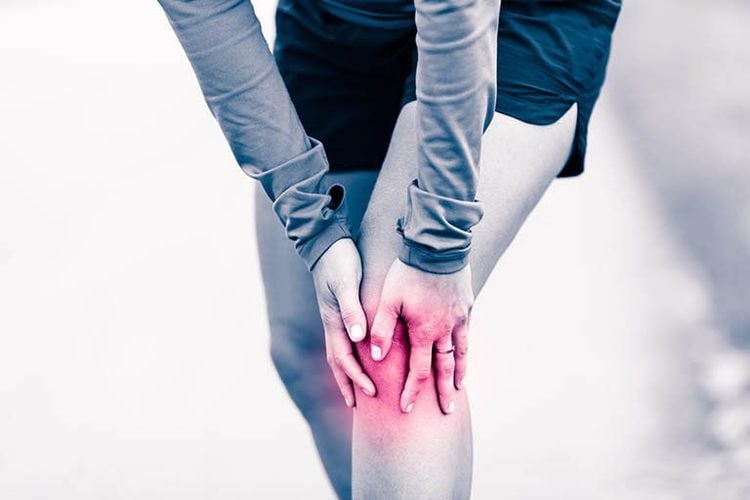
Hội chứng đau bánh chè - đùi là chấn thương thể thao thường gặp ở vận động viên
Here are some tips to help you improve the symptoms of patellar fasciitis, including:
Stop doing activities that cause knee pain and switch to less impactful activities, such as swimming Or ride a bike until the pain goes away. Apply ice to the knee for 20 minutes several times a day. Talk to your doctor about some over-the-counter anti-inflammatory medications that help with pain, such as ibuprofen (Motrin IB, Advil, others) and naproxen sodium (Aleve). 3.3.Anterior cruciate ligament (ACL) Injury The anterior cruciate ligament (ACL) is one of the four main ligaments in the knee. ACL injuries are often associated with a torn ligament (sprain). Typically, an ACL injury will happen during swinging, jumping, or when you quickly change direction. These injuries are common among young female athletes in sports such as football and basketball.
Female athletes have a significantly higher risk of ACL injury than male athletes. Some studies suggest that female hormones and anatomy make young female athletes more susceptible to this injury.
At the time of the ACL injury, you may hear a clicking sound, then the knee becomes swollen and painful quickly. Your knee may lose full range of motion and feel soft when you move.
To diagnose an ACL injury, you should have a physical exam of the injured area. In certain cases, your doctor may order an X-ray, an MRI, or both. Most ACL tears cannot be repaired with sutures, so doctors will have to reconstruct the ligament with tissue grafting. ACL reconstruction is usually performed laparoscopically, is less invasive and less painful, and has a quicker recovery time. Studies also show that young female athletes after ACL surgery feel their knees become more stable and are able to return to vigorous sports activities as before.
Here are some ways to help relieve symptoms caused by an ACL injury, including:
Wear a brace or use crutches to keep heavy weight off the injured knee. Apply ice as directed by your doctor to reduce swelling and pain. After surgery, you can do some exercises to help strengthen the calf muscles and restore function of the knee. These exercises should be tailored to the specific sport. It may also take about 9 months for you to return to your normal level of activity. 3.4. Fatigue fractures High impact sports such as tennis, running, gymnastics, volleyball, and basketball can put stress on the legs and feet. When muscles are overused and fatigued, they can sometimes transmit pressure to the bones, causing microcracks or severe stress overload in the bones. These injuries, known as fatigue fractures, usually occur in the lower leg or foot.
Young female athletes are the most susceptible to fatigue fractures because they tend to have thinner and more fragile bones. In addition, not getting enough vitamin D and calcium also contributes to an increased risk of fatigue fractures. The main symptom of this condition usually includes pain in a certain area when you are at rest, and the pain gets worse when you run, jump or walk.
Health care professionals often recommend that young female athletes avoid any vigorous activity for 6 to 8 weeks while the wound is healing. The rush to get up and running again can aggravate fatigue fractures and even lead to chronic problems. Doctors often recommend that patients with fatigue fractures use crutches to support the injured leg, and then wear shoes or a brace as the fatigue fracture heals.
To improve the pain symptoms of fatigue fractures, you can do some of the following:
Keep the injured area away from weight or pressure. If swelling occurs, you should lie down and rest with your feet elevated above your heart. Apply ice for 20 minutes several times a day to reduce swelling and pain. With your doctor's approval, you can start exercising with low-impact activities like swimming or cycling. Maintain a healthy diet, ensure adequate calcium as well as vitamin D for the body.
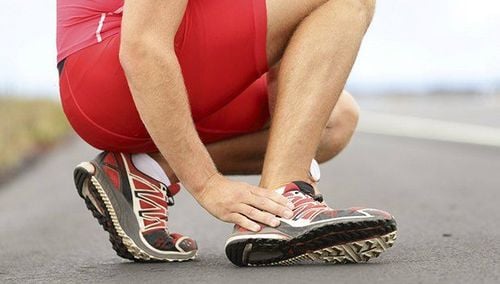
Gãy xương do mệt mỏi là chấn thương thể thao thường gặp ở những môn có động tác mạnh
Dislocation: The head of the upper arm bone has dislocated from its socket in the shoulder joint. Partial Dislocation: The upper arm bone is partially dislocated from the socket of the shoulder joint. Looseness: The shoulder joint is loose. With a shoulder dislocation, a partial or complete dislocation, the doctor will determine the direction of the bone on the arm that has slipped, most commonly toward the front of the shoulder and downward. Three-way instability (MDI) is general loosening of the joint in all directions, which can cause the upper arm bones to dislocate or partially dislocate. MDI tends to be more common than unidirectional dislocations in young female athletes. Shoulder instability is increasingly common among young female athletes who play sports such as volleyball, tennis and swimming.
Shoulder dislocation is painful and requires immediate treatment. Patients should immediately immobilize the joint and apply ice, even while waiting for a doctor to arrive. Some other symptoms of a shoulder dislocation often include swelling, numbness, and bruising.
Dislocations can be treated with a joint reduction procedure, which gently places the humerus back into the shoulder joint, thereby preventing severe pain. Although most shoulder instability injuries are treated non-surgically, doctors recommend surgery when instability becomes chronic. In particular, in female athletes under the age of 19 who have dislocated the shoulder, the rate of dislocation is often very high. With surgery, your doctor will help you repair and tighten the ligaments that hold the joint in place.
There are a few things you can do to alleviate shoulder dislocations, including:
Rehabilitate an injured shoulder by keeping the shoulder immobile. Apply ice for 15 to 20 minutes every few hours for the first few days after the injury. After about 3 days, you may consider using a heating pad for no more than 20 minutes at a time to help relax tense shoulder muscles. Follow your healthcare professional's instructions for pain management. You can do some gentle exercise at home, avoiding exercises that have a strong impact on the injured area.
Please dial HOTLINE for more information or register for an appointment HERE. Download MyVinmec app to make appointments faster and to manage your bookings easily.
Reference source: mayoclinic.org






